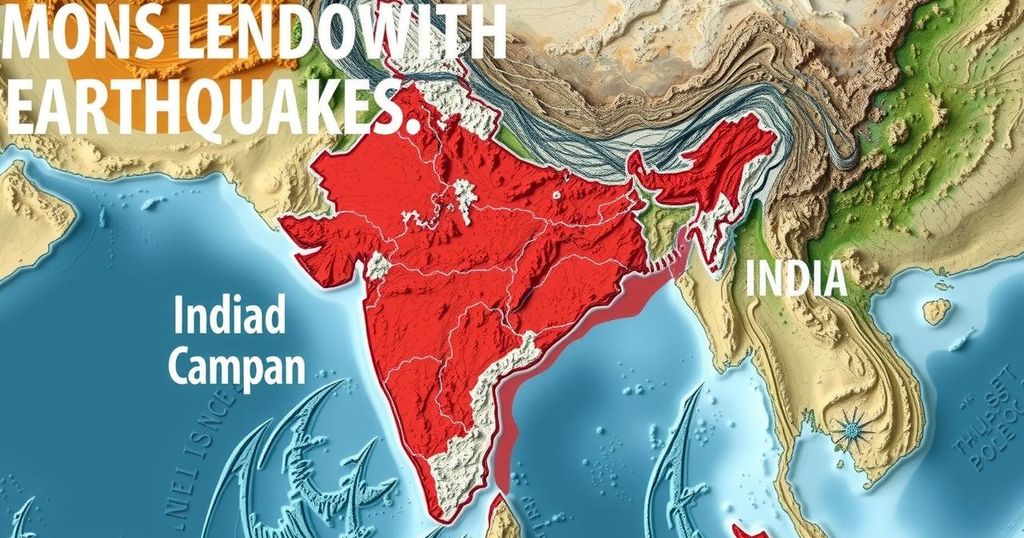India’s Earthquake Vulnerability: Recent Events and Global Standing
India was struck by a 7.1 magnitude earthquake near the Nepal border on January 7, 2025, the most powerful since the catastrophic 2015 tremor in Nepal. Ranking seventh globally, India has recorded 58 significant earthquakes between 1990 and early 2024. The country’s geographical position makes it especially vulnerable to earthquakes, necessitating urgent attention to disaster preparedness and construction regulations.
On January 7, 2025, a significant earthquake measuring 7.1 in magnitude struck near the Nepal-Tibet border, impacting northern India, including Bihar. This tremor was the most intense in the region since the devastating Nepal earthquake in April 2015, which led to roughly 10,000 fatalities. Earthquake activity is particularly prevalent in Asian countries such as China, Indonesia, and Japan, with Indonesia being the most earthquake-prone country, reporting 2,212 events of magnitude 4 or higher.
A detailed review of major earthquake occurrences from 1990 to early 2024 highlights that China leads with 186 significant earthquakes, followed by Indonesia with 166, and Iran with 109. India ranks seventh globally with 58 significant earthquakes reported during this timeframe. The country’s geographical location at the intersection of multiple tectonic plates exposes it to seismic threats, with nearly 59% of its area vulnerable to moderate or severe earthquakes.
Historically, India has faced powerful seismic events, particularly in the Himalayan region, with notable quakes occurring in Shillong in 1897, Kangra in 1905, Bihar-Nepal in 1934, and Assam-Tibet in 1950, all exceeding a magnitude of 8.0. Such frequency of seismic activity underscores the necessity for stringent regulations surrounding construction and disaster preparedness in the earthquake-prone regions of India.
Countries in Asia are notably susceptible to seismic activities, driven by their unique geological settings. For instance, Indonesia’s high frequency of earthquakes places it at the forefront as the most affected nation. Moreover, a review of major earthquakes from 1990 to early 2024 indicates a pattern of frequent seismic activities in countries like China and Indonesia, with India positioned as the seventh most earthquake-prone nation, primarily due to its tectonic convergence. It is important to recognize that various factors contribute to India’s earthquake vulnerabilities, including rapid urbanization, insufficient regulatory measures in construction practices, and high population density in prone areas. These factors necessitate increased awareness and robust preparedness strategies to mitigate the risks associated with seismic threats.
In conclusion, India is indeed among the countries significantly affected by earthquakes, ranking seventh globally in terms of major seismic events recorded from 1990 to early 2024. The recent earthquake near the Nepal-Tibet border further exemplifies the urgent need for enhanced awareness and preparedness in earthquake-prone areas. As India remains susceptible to seismic activities, it becomes imperative for authorities to prioritize building resilience in infrastructure and communities to better withstand such natural disasters.
Original Source: indianexpress.com




Post Comment